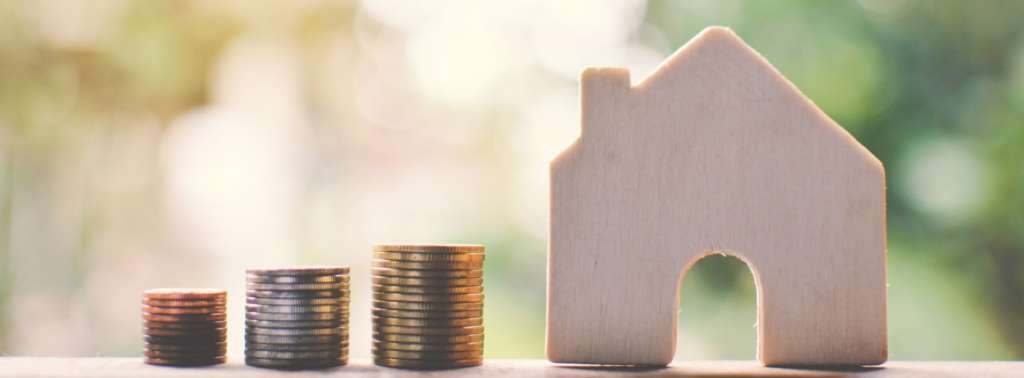While financial advice for potential homeowners is often dominated by the question of the down payment, closing costs don’t always get quite as much attention – but they’re an essential element for you to take into account, even in the earliest stages of homebuying research.
Just for one thing, they’ll need a place in your budget: Closing costs range from 2%-6% of your home’s purchase price (we’ll get into this in more detail below), so if you’re planning to make a 3% down payment, the closing costs could potentially double what you owe on closing – making them much more than an afterthought.
But if you’re a little fuzzy on the question of closing costs – what they are, what purpose they serve, what they’ll cost for you, and how to pay for them – you’re not alone. Check out our guide below and you’ll be an expert in no time.
What is Included in Closing Costs?
So, what exactly are closing costs? At their most basic level, they’re a bundle of fees that are due on the day a property sale closes – basically any expense other than the down payment. Closing costs can be paid by the buyer, seller, or both, and legally must be disclosed and agreed on in advance before the purchase can be completed.
While closing costs are presented to the buyer as a single amount payable to the lender, they actually represent a variety of expenses related to a home sale – everything from the appraisal to the credit check fee – due to a range of different parties. For the sake of convenience, they’re packaged together in one amount and paid in escrow (or in other words, they’re temporarily held by an independent third party) until the sale closes and the funds are distributed to the relevant entities.
Who Pays Closing Costs?
While the question of who pays which closing cost is generally up for negotiation, there are certain closing costs that are traditionally paid by the buyer, and others typically paid by the seller.
The list of closing costs typically paid by the buyer is generally longer, but they’re not necessarily more expensive; in fact, while the buyer can expect to pay 2%-6% of the purchase price in closing costs, the seller can expect to pay 8%-10% of the purchase price (though in reality, as we’ll see, the question of who’s really paying what is more complicated than that).
Costs for buyers generally fall into one of two buckets: property-related fees, and mortgage-related fees.
Property-related Fees Often Include:
- Appraisals
- Home Inspections
- Flood Certification
- Homeowners Insurance
- Title Insurance
Mortgage-related Fees Could Include:
- Private Mortgage Insurance (PMI)
- Mortgage Application Fee
- Underwriting Fee
- Credit Report Fee
- Loan Origination Fee
The most notable closing cost paid by the seller is the real estate agent fee, the commission earned by the agent(s) who closed the sale. The agent fee currently comes to about 6% of the purchase price on average in the US, easily forming the bulk of closing costs paid by the seller – at least on paper. In reality, real estate agent fees are usually rolled into the home’s sale price, then deducted from that sale once the funds are transferred to the seller, so a case could be made that the agent fees are actually paid by the buyer.
Other Closing Costs Often Paid by the Seller Include:
- Attorney’s Fees
- Escrow Fees
- Home Owners Association (HOA) Fees
- Prorated Property Taxes
It’s entirely possible that various fees can move from the buyer’s bill to the seller’s, or vice versa, generally depending on who has more leverage in the sale. If the seller agrees to pay some or even all of the buyer’s closing costs, these are known as seller concessions. These tend to be more prevalent in a buyers’ market, when homeowners are eager to close the deal.
Like the real estate agent fee, seller concessions come out of the home price, rather than the pocket of the seller, and some buyers will agree to a higher home price in exchange for seller concessions. But there are often limits on seller concession amounts, according to the loan type, and sometimes the down payment amount:
For a conventional loan with a down payment of 25% or more, a seller is authorized to cover up to 9% of the home’s purchase price in closing costs – but if the down payment is less than 10%, the seller can cover no more than 3%. On the other hand, a government loan through the Federal Housing Administration (FHA), the seller cannot contribute above 6%, regardless of the down payment amount. For a loan from the Department of Veteran Affairs (VA), that limit is 4%.

How Much are Typical Closing Costs?
As we mentioned earlier, typical closing costs for a buyer range from 2%-6% of your home’s purchase price – so if you’re buying a $200,000 home, you can expect to pay $4,000-$12,000 in closing costs. If you’re purchasing a $300,000 home, those costs rise to the $6,000-$18,000 range. If you’d like to try and get a bit more specific than that, a variety of online calculators can help you form a better idea of your closing costs. Our mortgage calculator tool will generate a closing cost estimate included in the mortgage estimate, and other calculators focus on closing costs alone. You should be able to get some idea if you know the following:
- Home Price
- Estimated Down Payment
- Mortgage Interest Rate
Other online calculators may also ask for the loan type, loan term, and the property’s zip code.
The latter can prove a crucial factor – as with most aspects of the homebuying process, the question of where you live can have a huge effect on your closing costs. In the first half of 2021, national average closing costs for a single-family home (including taxes) came to $6,837 – but on a state-by-state basis, costs ranged from $2,071 (in Arkansas) to $30,452 (in the District of Columbia). In New York, average closing costs were $17,582, and California’s came in below the national average at $5,772.
Your closing costs could also change based on what type of loan you have, your mortgage lender, credit score, and more.
The good news is, whatever your closing costs are, they shouldn’t come as a complete surprise, and certainly not on the day of sale: Lenders must provide an estimate of closing costs with their original Loan Estimate, which they’re legally required to send you within three days of receiving your mortgage application.
This can help you not only know what you’re getting into, but shop around at different lenders who might offer better deals. It’s worth remembering, though, that the key word is “estimate” – this is not a guarantee of closing costs, just the lender’s best guess as to what they’ll be.
How can I Avoid Closing Costs?
A quick internet search on avoiding closing costs will quickly bring you to something called a no-cost loan, but the name can be misleading. While a homebuyer who chooses a no-cost loan may feel that they’ve saved money on closing day by avoiding upfront fees, they’re not avoiding the fees altogether – they’ll still pay closing costs, just wrapped up into the principal of the loan.
Lenders also often increase interest rates when incorporating closing costs into the loan, so that homebuyers will find themselves paying more (potentially much more) than the original closing costs over time. But for homebuyers looking to reduce their immediate costs, a no-cost loan can be a potential tool to make a mortgage more accessible, sooner.
It’s worth noting that refinancers also have the option of rolling refinance closing costs into their loan; in general, the makeup of closing costs look much the same for a purchase or refinancing. A key difference is that by the time a homeowner refinances, they’re likely refinancing a smaller amount than their original mortgage, and the percentage of closing costs they pay will adjust accordingly.
How can I Lower Closing Costs?
While it’s tricky to avoid closing costs altogether, there are plenty of ways you might lower them. Here are a few of the most common tactics to consider:
Consider different lenders: There’s no reason to accept the first offer you receive from a lender. Especially if you have strong credit and can afford a sizable down payment, you’ll find that lenders will compete for your business, and may offer to lower interest rates and fees (such as loan origination fees or some refinance costs), or even waive them altogether. The loan estimate lenders provide to you, including their breakdown of estimated closing costs, is an invaluable tool to help you make an informed decision, and even use certain offers as leverage to negotiate.
Negotiate with the seller: As we mentioned earlier, there’s always the possibility of seller concessions, particularly in a buyer’s market.
Apply for cost assistance: Some potential homeowners, especially those of low and moderate income (depending on cost of living in your area), may qualify for loans or grants from nonprofits, lenders, or local governments. These can cover down payments, closing costs, or both.
Pick your moment: Here’s another simple trick: Try to schedule your closing for the end of the month, so that you’re not paying as much in per diem prepaid interest before the first month of your mortgage begins.
While they may seem overwhelming at first, closing costs are ultimately just like any other part of the homebuying process: completely manageable. With the help of some research, planning, and friendly advice, you can avoid surprises, ace closing day, and enjoy your new home in no time.
K. Hovnanian Homes builds new home communities across the nation and offers a wide variety of home designs, including a variety of kitchen styles. Find a K. Hovnanian community in your state by visiting khov.com.
Last Updated on March 24, 2022
